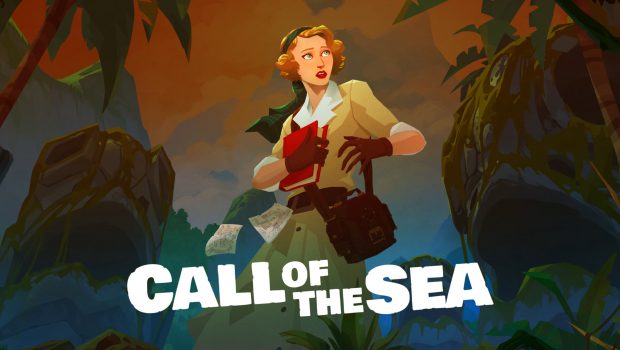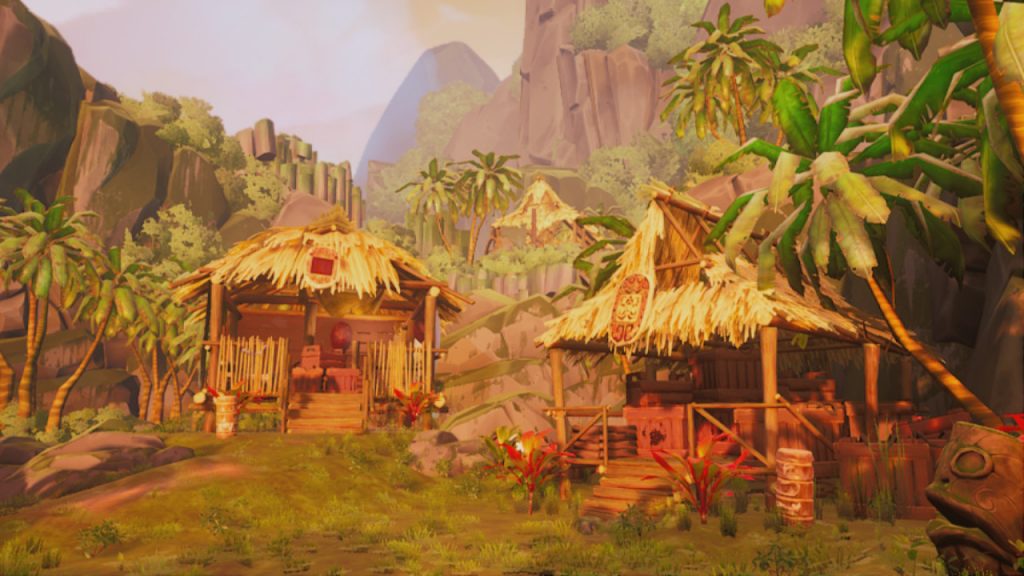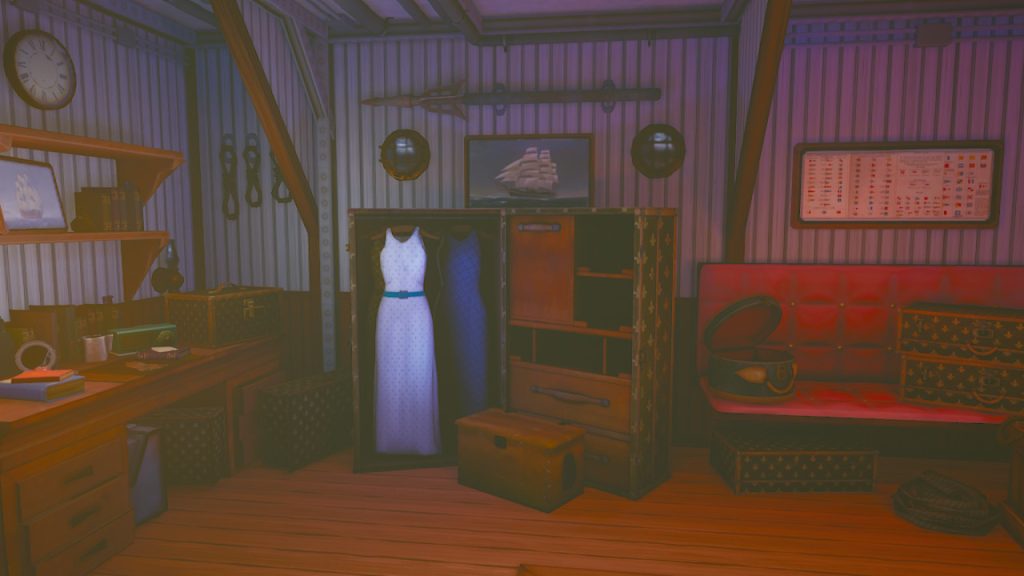Call of the Sea Review (Switch)
Summary: Call of the Sea is a first-person puzzle adventure set in 1934, where you play as Norah, a woman searching for her missing husband on a mysterious South Pacific island. The game blends environmental exploration with approachable puzzles, using journals, symbols, and artifacts to gradually unravel the island’s secrets. Its story mixes love, mystery, and Lovecraftian undertones, offering a short, but atmospheric experience that emphasizes mood and discovery over challenge.
3.4
Tainted Trail
Something strange stirs beneath the waves, and it’s calling your name. Call of the Sea is a first-person adventure puzzle game developed by Out of the Blue Games and published by Raw Fury. Originally released on December 8th of 2020, for Xbox Series X|S, Xbox One, and PC, it later arrived on PlayStation 4 and PlayStation 5 in May of 2021. Now, as of September 9th of 2025, the game has washed ashore on the Nintendo Switch. With Out of the Blue currently preparing the sequel, Call of the Elder Gods, the timing feels deliberate. This feels like an invitation for new players to experience the studio’s breakout title before embarking on its follow-up. But does this island adventure shine on Switch, or should it be left to sink beneath the waves?
The story is set in 1934 and places you in the shoes of Norah, a woman who suffers from a mysterious illness that spreads black blotches across her skin. When her husband Harry’s expedition to a remote island vanishes without a trace, Norah decides to follow his path in search of answers. What begins as a desperate rescue mission slowly transforms into something far stranger. The island feels alive with secrets such as haunting ruins, surreal visions, and dreamlike echoes of a forgotten civilization. As Norah explores further, her search for Harry intertwines with an unsettling personal revelation, thematically blurring the line between discovery and destiny. It’s an intriguing narrative hook; it does a good job balancing a love story with Lovecraftian undertones while sidestepping the more oppressive tropes of cosmic horror.
The story’s delivery, however, isn’t flawless. Norah narrates constantly, and while her voice provides essential context and emotional framing, it can occasionally veer into over-explanation. Notes scattered around the island often repeat the same prophetic warnings or tragic details, which can sap momentum from the mystery. Cissy Jones (Delilah in Firewatch, Joyce Price in Life Is Strange, among many others) delivers voice work as Norah that shines in its vulnerable moments, though it occasionally falters when tone and context fall out of sync. Still, the overarching tale is engaging enough to carry the player through its six chapters, especially as the final revelations bring a personal weight to the broader mysteries.
Gameplay unfolds through environmental exploration and puzzle-solving. As Norah, you’ll walk through a linear series of lush environments, piecing together clues from journals, symbols, and artifacts left behind by Harry’s crew. Each solved puzzle brings you one step closer to the heart of the island. While the formula isn’t groundbreaking, it’s effective enough to feel fleshed out and fulfilling. Deciphering strange symbols opens new pathways, reconfiguring mechanisms activates ancient machinery, and piecing together scattered notes sheds light on both the expedition and Norah’s condition. The loop is simple, but satisfying, particularly for players who enjoy methodical, deliberate problem-solving.
The journal system deserves credit for how seamlessly it integrates gameplay with the narrative. Norah sketches clues, records her thoughts, and organizes discoveries, giving players a tangible way to track progress. It also doubles as a subtle hint system, often nudging you toward a solution without outright solving it. Collectibles such as murals and secret trinkets add optional layers of lore and replayability, though the game’s largely linear nature limits freedom. For newcomers to the genre, Call of the Sea feels welcoming. It’s challenging enough to require thought, but rarely obtuse enough to cause frustration.
Puzzles escalate in complexity as the chapters progress. Early tasks revolve around matching symbols or activating switches, but later challenges demand more observation and planning, such as synchronizing timed mechanisms or unlocking intricate gear systems. Importantly, the game avoids the pitfall of punishing difficulty. Even the trickier late-game puzzles are grounded in logic and reinforced by contextual clues in the environment or Norah’s notes. The result is a steady curve of satisfaction rather than anything being fully frustrating. Veterans of puzzle adventures may find the solutions too straightforward, but the accessibility makes this an ideal starting point for those new to the genre.
The Nintendo Switch version, however, comes with compromises. Visually, Call of the Sea is meant to be striking with its tropical setting bursting with color and surreal touches. On Switch, much of that artistry remains intact, but it is noticeably constrained. Waterfalls shimmer with a slightly cartoonish quality, textures blur together, and jagged edges crop up throughout the environments. Pop-in issues are frequent, and interactive objects like books and journals sometimes animate at lower framerates, which surprisingly, can easily break the immersion. Murals that should gleam with golden brilliance occasionally load in as muddy smears. None of these issues make the game unplayable, but they diminish the impact of what was originally a very polished presentation.
Performance also struggles at times. While the frame rate generally holds, dips occur in more complex areas, making traversal feel sluggish. It’s serviceable, but not optimal, especially given the game’s reliance on atmosphere. Audio fares better with ambient sounds of chirping birds, flowing water, and distant thunder that sell the illusion of a living island. The score is on the softer side yet still evocative, building mood without overwhelming the player. Dialogue hiccups exist like lines occasionally getting cut-off or odd tonal shifts, but the audio design overall anchors the experience more reliably than the visuals.
Despite its imperfections, Call of the Sea retains its charm. The game’s greatest strength lies in its atmosphere that really sells a sense of curiosity and unease that compels you to push forward. It may not rival genre heavyweights in terms of depth or polish, but it has a sincerity that carries through. The puzzles are approachable, the environments, when not hampered by Switch limitations, are beautiful, and the story, while unevenly told, offers enough intrigue to sustain its brief runtime.
Ultimately, the Switch version is not the best way to experience Call of the Sea. Performance issues and visual downgrades hold it back from being definitive. Yet the heart of the game remains intact. For anyone who has never ventured into this style of puzzle-driven adventure, or for those curious about the narrative before diving into its sequel, the Switch release still provides a gateway. Veterans or those with access to more powerful platforms may want to experience it elsewhere to fully appreciate the artistry.
Final Thoughts?
Call of the Sea on the Nintendo Switch is not a flawless game, and may not be the best place to try to experience the heaviness and brevity of the story trying to be told, but you can still jump into this world just fine on this system. The flexibility of playing on a handheld and taking it anywhere is a major advantage that helps offset many of the game’s shortcomings. It is a modest, heartfelt adventure that blends puzzles, story, and atmosphere into something earnestly memorable. While the Switch struggles to do justice to its presentation, the underlying experience is still worth a look, particularly for those eager to uncover what lies beneath the waves before the sequel surfaces.




















